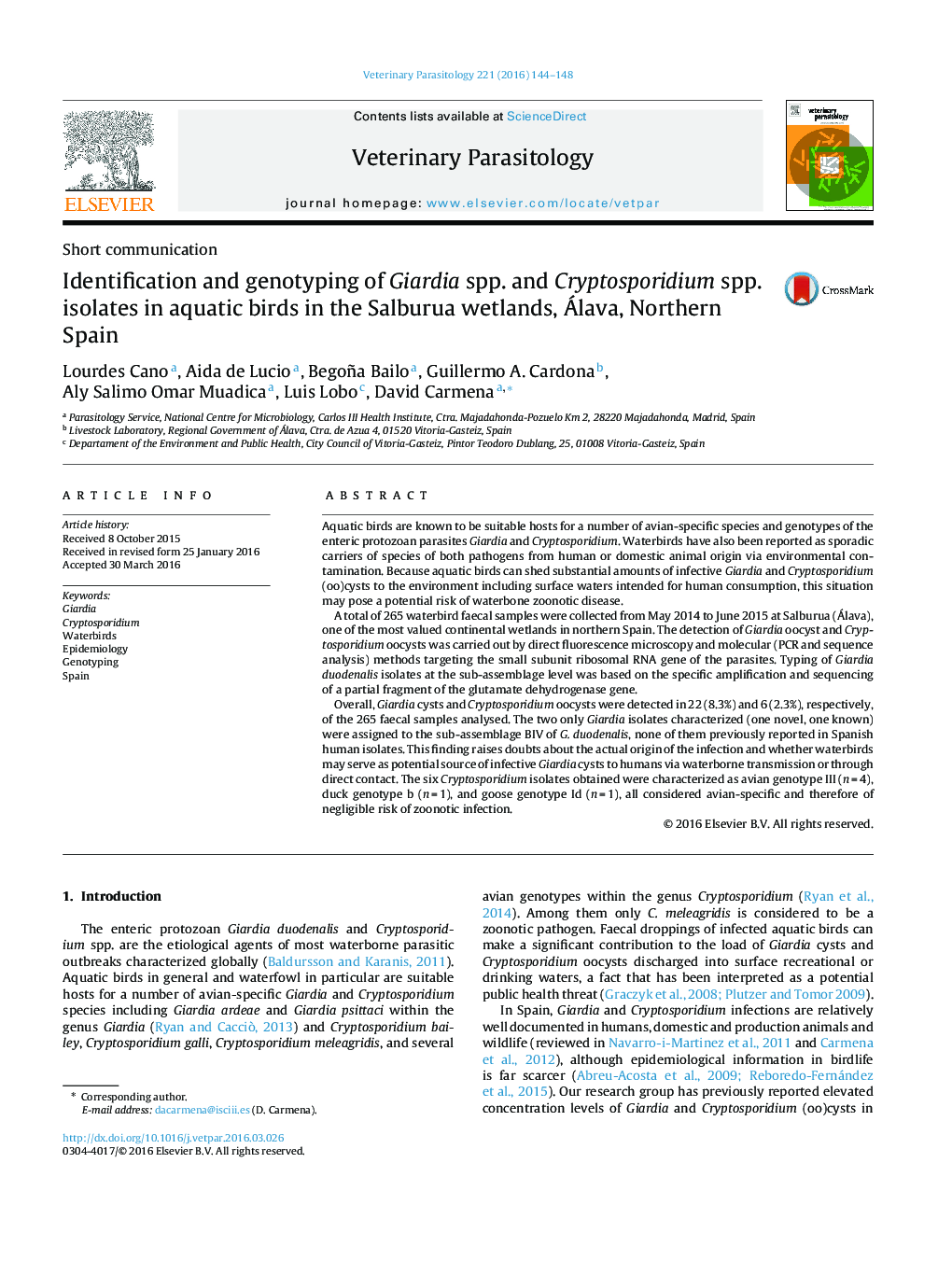| Article ID | Journal | Published Year | Pages | File Type |
|---|---|---|---|---|
| 5802213 | Veterinary Parasitology | 2016 | 5 Pages |
â¢Giardia cysts and Cryptosporidium oocysts were detected in 8.3% and 2.3%, respectively, of 265 faecal dropping samples from aquatic birds in northern Spain.â¢Both parasitic protozoan species were identified causing light burden of infection.â¢A novel genotype assigned to the sub-assemblage BIV of G. duodenalis was detected.â¢Only avian-specific Cryptosporidium genotypes were found circulating in the population under study.â¢Waterbirds may have a role in the spreading of enteric zoonotic pathogens, including Giardia and Cryptosporidium, through waterborne transmission.
Aquatic birds are known to be suitable hosts for a number of avian-specific species and genotypes of the enteric protozoan parasites Giardia and Cryptosporidium. Waterbirds have also been reported as sporadic carriers of species of both pathogens from human or domestic animal origin via environmental contamination. Because aquatic birds can shed substantial amounts of infective Giardia and Cryptosporidium (oo)cysts to the environment including surface waters intended for human consumption, this situation may pose a potential risk of waterbone zoonotic disease.A total of 265 waterbird faecal samples were collected from May 2014 to June 2015 at Salburua (Álava), one of the most valued continental wetlands in northern Spain. The detection of Giardia oocyst and Cryptosporidium oocysts was carried out by direct fluorescence microscopy and molecular (PCR and sequence analysis) methods targeting the small subunit ribosomal RNA gene of the parasites. Typing of Giardia duodenalis isolates at the sub-assemblage level was based on the specific amplification and sequencing of a partial fragment of the glutamate dehydrogenase gene.Overall, Giardia cysts and Cryptosporidium oocysts were detected in 22 (8.3%) and 6 (2.3%), respectively, of the 265 faecal samples analysed. The two only Giardia isolates characterized (one novel, one known) were assigned to the sub-assemblage BIV of G. duodenalis, none of them previously reported in Spanish human isolates. This finding raises doubts about the actual origin of the infection and whether waterbirds may serve as potential source of infective Giardia cysts to humans via waterborne transmission or through direct contact. The six Cryptosporidium isolates obtained were characterized as avian genotype III (n = 4), duck genotype b (n = 1), and goose genotype Id (n = 1), all considered avian-specific and therefore of negligible risk of zoonotic infection.
